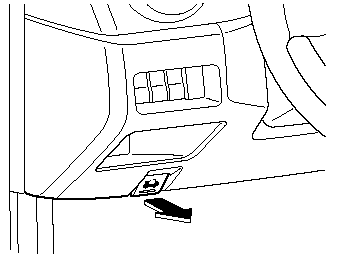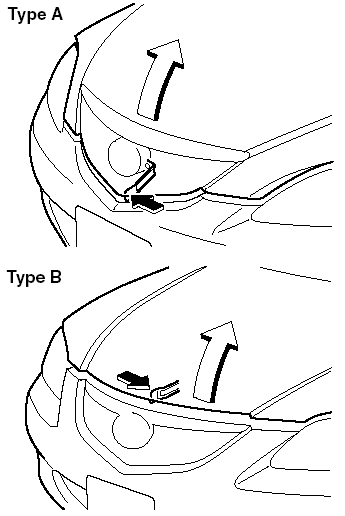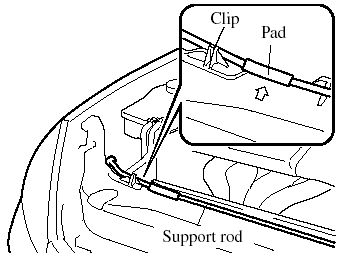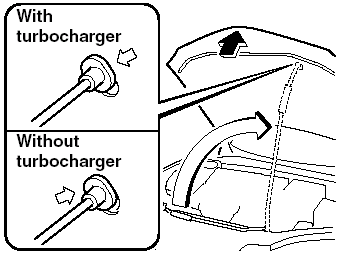Hood
WARNING:
Always check that the hood is closed
and securely locked:
A hood that is not closed and
securely locked is dangerous as it
could fly open while the vehicle is
moving and block the driver's vision
which could result in a serious
accident.
Opening the Hood

1. With the vehicle parked, pull the release handle to unlock the hood.

2. (Type A)
Insert your hand into the hood opening
and slide the hood latch to the left and
lift the hood.
(Type B)
Insert your hand into the hood opening
and slide the hood latch to the right and
lift the hood.

3. Grasp the support rod in the padded area indicated by the arrow.

4. Secure the support rod in the stay hole indicated by the arrow to hold the hood open.
Closing the Hood
WARNING:
Do not leave items in the engine
compartment:
After you have finished checking or
doing servicing in the engine
compartment, do not forget and
leave items such as tools or rags in
the engine compartment.
Tools or other items left in the engine compartment could cause engine damage or a fire leading to an unexpected accident.
1. Check under the hood area to make certain all filler caps are in place and all loose items (e.g. tools, oil containers, etc.) have been removed.
2. Insert the support rod in its clip while holding up the hood. Verify that the support rod is secured in the clip before closing the hood.
3. Close the hood so that it locks securely.
See also:
In Case of an Emergency
Helpful information on what to do in an emergency. ...
Recreational Towing
An example of “recreational towing” is
towing your vehicle behind a motorhome.
The transmission is not designed for
towing this vehicle on all 4 wheels.
When doing recreational towing refer to
“T ...
Jump-Starting
Jump-starting is dangerous if done incorrectly. So follow the procedure
carefully. If you
feel unsure about jump-starting, we strongly recommend that you have a competent
service
technician do t ...


